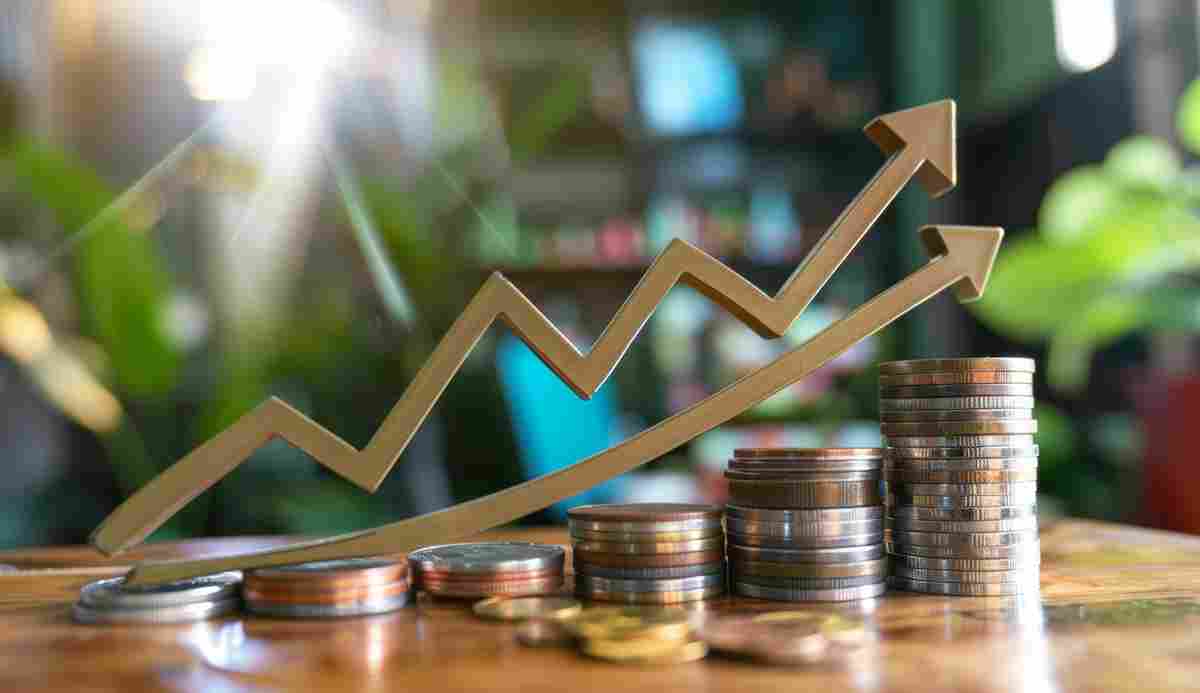Understanding the intricacies of the UK’s output producer prices can give forex traders a significant edge in navigating the volatile currency markets. This comprehensive guide delves into the nuances of producer prices, their impact on forex trading, and strategies to capitalize on these economic indicators. Buckle up as we embark on this journey, unraveling the complex relationship between producer prices and forex trading.

What Are UK Output Producer Prices?
Defining Producer Prices
Producer prices, often referred to as output prices, are the prices at which producers sell their goods and services. These prices exclude taxes and subsidies but include costs related to production. In simpler terms, they reflect the revenue producers earn from their output before it hits the consumer market.
The Significance of Producer Prices
Why should forex traders care about producer prices? Because they are a leading indicator of inflation. When producer prices rise, it typically signals that higher consumer prices are on the horizon. This anticipation of inflation can prompt central banks to adjust monetary policies, which, in turn, influences currency values.
The Mechanics of Producer Price Index (PPI)
How PPI Is Calculated
The Producer Price Index (PPI) measures the average change over time in the selling prices received by domestic producers for their output. It’s calculated by surveying producers across various sectors, aggregating the prices, and comparing them to a base period. This index provides a snapshot of inflationary trends at the producer level.
Components of PPI
PPI isn’t a monolithic measure; it comprises several components, including commodity prices, industry-specific prices, and stage-of-processing prices. Each component offers insights into different inflationary pressures within the economy, helping traders gauge the broader economic landscape.
Impact of Rising Producer Prices on Forex Markets
Inflation Expectations

Rising producer prices often signal impending inflation. Central banks, like the Bank of England, may respond by tightening monetary policy, such as raising interest rates. Higher interest rates generally strengthen a currency as they attract foreign investment, boosting demand.
Currency Fluctuations
When traders anticipate a rise in interest rates due to climbing producer prices, they may start buying the currency in question, leading to an appreciation. Conversely, if producer prices fall, it could signal deflationary pressures, potentially resulting in a weaker currency.
Strategies for Forex Traders
Monitoring Economic Indicators
Successful forex trading hinges on staying informed. Regularly monitor the PPI and other related economic indicators, such as the Consumer Price Index (CPI) and Gross Domestic Product (GDP). These data points collectively offer a comprehensive view of the economic landscape.
Using Technical Analysis
Incorporate technical analysis to identify trends and patterns in currency movements. Tools like moving averages, Bollinger Bands, and Relative Strength Index (RSI) can help traders predict how the market might react to changes in producer prices.
Case Study: The Brexit Effect
Pre-Brexit Scenario
Before Brexit, the UK’s economy was relatively stable, with predictable fluctuations in producer prices. Forex traders could rely on historical data and established patterns to make informed decisions.

Post-Brexit Volatility
Post-Brexit, the landscape changed dramatically. Producer prices became more volatile due to uncertainties in trade agreements and economic policies. Forex traders had to adapt quickly, relying heavily on real-time data and flexible trading strategies.
Central Bank Policies and Producer Prices
The Role of the Bank of England
The Bank of England (BoE) closely monitors producer prices to guide its monetary policy. When producer prices rise, signaling potential inflation, the BoE might raise interest rates to cool down the economy.
Policy Decisions and Market Reactions
Forex traders keenly watch BoE meetings and announcements. Even the hint of a policy change can cause significant market movements. Understanding the BoE’s approach to producer prices can help traders anticipate and react to these shifts.
Global Comparisons: UK vs. Other Economies
Producer Prices in the US
Comparing the UK’s producer prices with those of other major economies, like the US, provides valuable context. The US Federal Reserve’s response to its PPI trends can impact global forex markets, including the GBP/USD pair.
European Producer Prices
The Eurozone’s producer prices also play a crucial role. Given the UK’s close economic ties with the EU, fluctuations in European producer prices can indirectly influence the UK’s economic environment and, consequently, its currency.
Challenges in Predicting Producer Price Movements
Economic Uncertainties
Predicting producer prices isn’t a foolproof science. Economic uncertainties, geopolitical events, and unexpected shocks (like the COVID-19 pandemic) can drastically alter price trends, making forex trading a high-stakes endeavor.
Data Revisions
Initial PPI reports are often subject to revisions. These adjustments can lead to sudden market corrections, catching traders off guard. Staying updated with the latest data releases and revisions is crucial for maintaining a competitive edge.
Leveraging Technology in Forex Trading

Automated Trading Systems
Technology has revolutionized forex trading. Automated trading systems, powered by algorithms and artificial intelligence, can process vast amounts of data, including producer prices, to execute trades at optimal times.
Data Analytics Tools
Advanced data analytics tools enable traders to analyze PPI trends more effectively. These tools can identify correlations between producer prices and currency movements, providing deeper insights and enhancing decision-making processes.
Psychological Aspects of Forex Trading
Managing Emotions
Forex trading can be emotionally taxing, especially when markets are volatile. It’s essential to maintain a disciplined approach, avoiding impulsive decisions driven by short-term fluctuations in producer prices.
Staying Informed
Continuous learning and staying informed about economic indicators and market trends are vital. Joining forex trading communities, participating in webinars, and following reputable financial news sources can help traders stay ahead of the curve.
Real-World Applications
Hedging Strategies
Businesses that operate internationally often use forex hedging strategies to mitigate the risks associated with fluctuating exchange rates driven by changes in producer prices. Understanding these strategies can provide traders with new perspectives and techniques.
Investment Opportunities
Changes in producer prices can highlight investment opportunities in related sectors. For instance, rising prices in a particular industry might signal robust economic health, attracting forex traders to currencies linked to that industry.
Future Trends in Producer Prices
Technological Advancements
Technological advancements in production processes can lead to more efficient operations and stable producer prices. Forex traders should keep an eye on technological trends that might influence the PPI.
Sustainability and Green Initiatives

The global shift towards sustainability and green initiatives is reshaping production practices. This trend can impact producer prices, as eco-friendly practices might initially raise costs before leading to long-term savings.
Conclusion
Navigating the complex world of forex trading requires a deep understanding of economic indicators like the UK’s output producer prices. By staying informed, leveraging technology, and employing strategic analysis, traders can capitalize on the opportunities and mitigate the risks presented by fluctuations in producer prices. Remember, the key to success in forex trading lies in continuous learning and adapting to the ever-evolving market landscape.
FAQs
1. How do producer prices differ from consumer prices?
Producer prices reflect the prices at which producers sell their goods and services, excluding taxes and subsidies. Consumer prices, on the other hand, include these additional costs and represent the prices paid by consumers in the retail market.
2. Why are producer prices important for forex traders?
Producer prices are a leading indicator of inflation. Rising producer prices can prompt central banks to adjust monetary policies, which in turn influences currency values, making them crucial for forex traders.
3. How can I stay updated on UK producer prices?
You can stay updated by regularly monitoring economic reports released by the Office for National Statistics (ONS), following financial news, and using economic calendars that highlight key data release dates.
4. What role does the Bank of England play in relation to producer prices?
The Bank of England monitors producer prices to guide its monetary policy decisions. Changes in producer prices can influence the BoE’s actions on interest rates, which directly affect currency values.
5. Can technological advancements impact producer prices?
Yes, technological advancements can lead to more efficient production processes, potentially stabilizing or reducing producer prices. However, the initial implementation of new technologies might temporarily raise costs.
